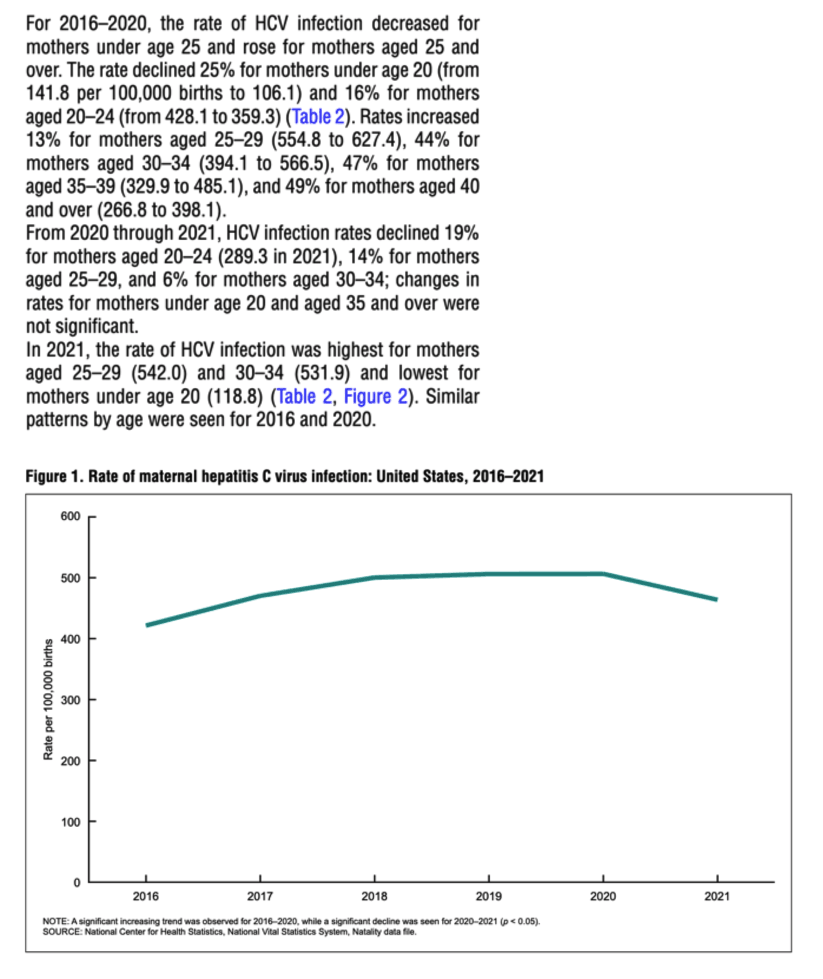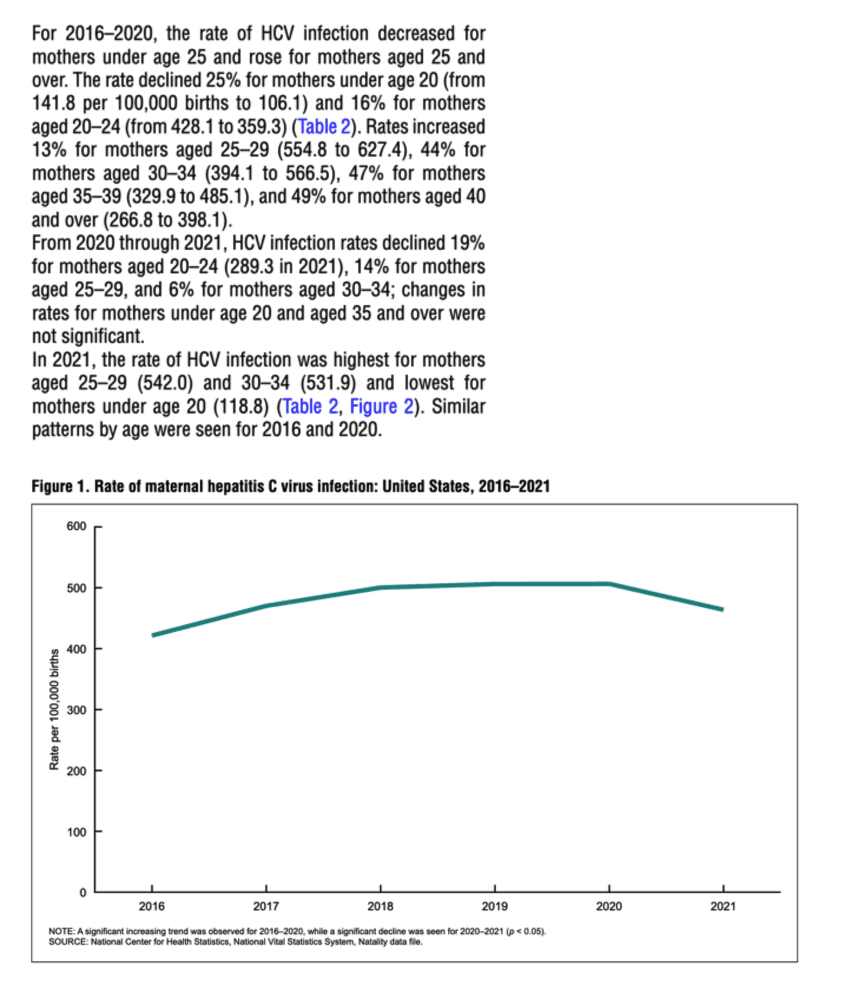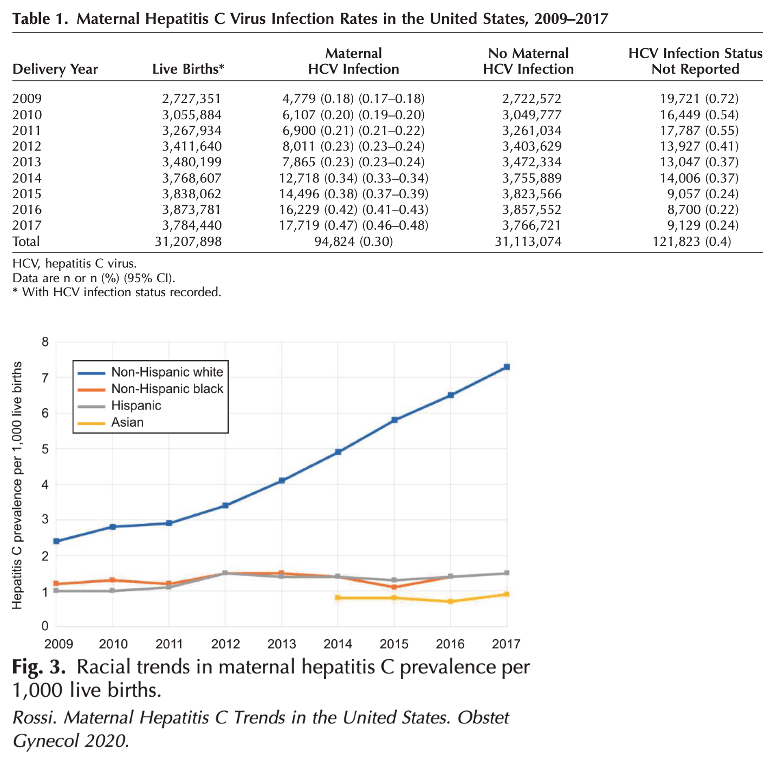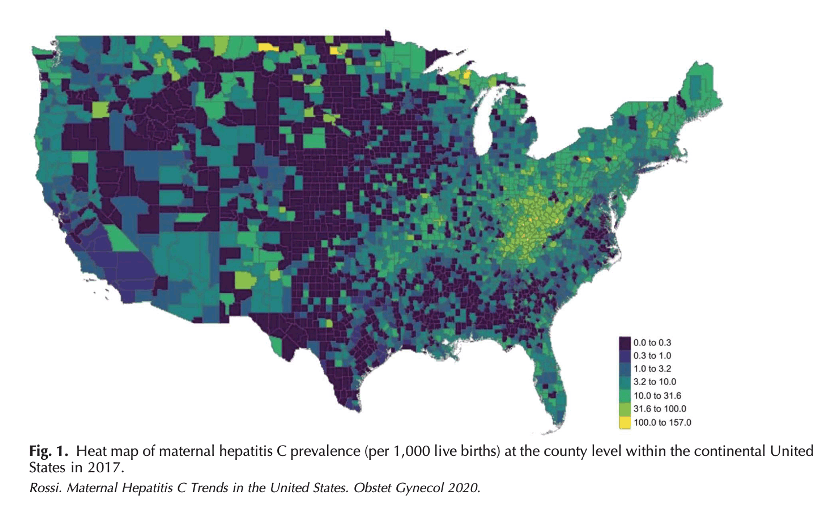| |
Updated HCV Maternal Infection Rates
|
| |
| |
Dowmload the PDF here
CDC: Trends and Characteristics in Maternal Hepatitis C Virus Infection Rates During Pregnancy: United States, 2016-2021 - (05/03/23)

The reported prevalence of maternal HCV infection has increased 161% from 2009 to 2017.
Reported Prevalence of Maternal Hepatitis C Virus Infection in the United States
2020
Rossi, Robert M. MD; Wolfe, Christopher MS; Brokamp, Richard PhD; McAllister, Jennifer M. MD; Wexelblatt, Scott MD; Warshak, Carri R. MD; Hall, Eric S. PhD
During the 9-year study period (2009-2017), there were 94,824 reported cases of maternal HCV infection among 31,207,898 (0.30%) live births in the United States with reported HCV infection status (Table 1). The reported prevalence of maternal HCV infection increased 161% from 1.8 cases per 1,000 live births to 4.7 cases per 1,000 live births (relative risk [RR] 2.7, CI 2.6-2.8) from 2009 to 2017 (Table 1). Maternal HCV infection was the second most prevalent and most rapidly increasing infection in the United States, as reported on the birth certificate form (Appendix 1, available online at https://links.lww.com/AOG/B681). In 2009, there were no states reporting maternal HCV infection rates of at least 10 per 1,000 live births. As of 2017, nine states (18%) reported maternal HCV infection rates at least 10 per 1,000 live births. An additional 16 states observed maternal HCV infection rate increases of greater than 100% between 2009 and 2017

OBJECTIVE:
To quantify the reported prevalence and trend of maternal hepatitis C virus (HCV) infection in the United States (2009-2017) and identify maternal characteristics and obstetric outcomes associated with HCV infection during pregnancy.
METHODS:
We conducted a population-based retrospective cohort study of all live births in the United States for the period 2009 through 2017 using National Center for Health Statistics birth records. We estimated reported prevalence and trends over this time period for the United States. We also evaluated demographic factors and pregnancy outcomes associated with maternal HCV infection for a contemporary U.S. cohort (2014-2017).
RESULTS:
During the 9-year study period, there were 94,824 reported cases of maternal HCV infection among 31,207,898 (0.30%) live births in the United States. The rate of maternal HCV infection increased from 1.8 cases per 1,000 live births to 4.7 cases per 1,000 live births (relative risk [RR] 2.7, 95% CI 2.6-2.8) in the United States. After adjusting for various confounders in the contemporary U.S. cohort (2014-2017), demographic characteristics associated with HCV infection included non-Hispanic white race (adjusted RR 2.8, 95% CI 2.7-2.8), Medicaid insurance (adjusted RR 3.3, CI 3.2-3.3), and cigarette smoking (adjusted RR 11.1, CI 10.9-11.3). Co-infection during pregnancy with hepatitis B (adjusted RR 19.2, CI 18.1-20.3), gonorrhea, chlamydia, or syphilis were also associated with maternal HCV infection. Obstetric and neonatal outcomes associated with maternal HCV infection included cesarean delivery, preterm birth, maternal intensive care unit admission, blood transfusion, having small-for-gestational-age neonates (less than the 10th percentile) birth weight, neonatal intensive care unit admission, need for assisted neonatal ventilation, and neonatal death.
CONCLUSION:
The reported prevalence of maternal HCV infection has increased 161% from 2009 to 2017.


| |
| |
| |
|
|
|